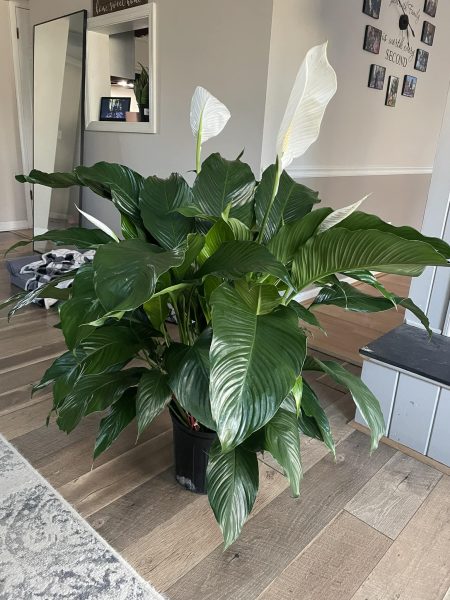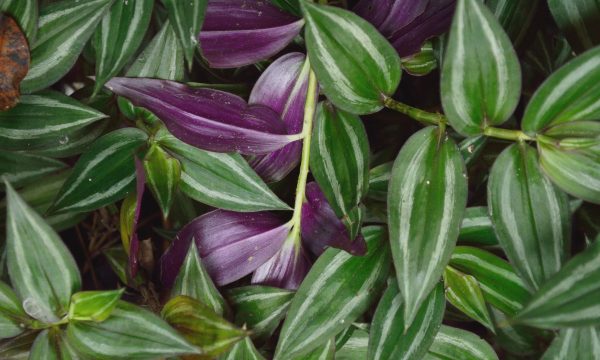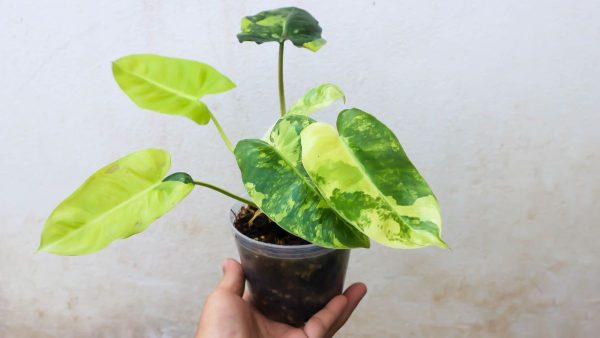The Peace Lily is not just known for its air-purifying qualities but also its bright and white flowers that add beauty to your house.
Yet, for many houseplant lovers, getting these beauties to flower can feel like a bit of a mystery.
In this guide, I’m going to share the secrets behind getting your peace lily to bloom, don’t ignore the 7th one because it’s the main secret that stores don’t want you to know.
When Peace Lilies Bloom?
In the ideal indoor setting, Peace Lilies will typically bloom when they’re reaching their natural “ready to flower” height.
Not all Peace Lilies will bloom in every cycle, but when they do, it’s a sight to behold.
But don’t worry if you follow these tips you can get your peace lily to bloom easily.
Do These Things to Bloom Your Peace Lily

1. Light
Light is life for plants. For peace lilies, it’s about finding the Goldilocks zone, neither too much nor too little.
Therefore, place your peace lily in a spot where it receives bright, indirect sunlight.
Direct exposure to strong sunlight can burn its leaves, while too little light can hinder the energy needed for flowering.
So, for best results place it near a window that gets gentle, filtered light.
2. Water Matters
The type of water you use can impact your peace lily’s well-being and blooming potential.
Chlorinated water can affect the plant’s health, leading to browning of the tips and edges of its leaves.
So, use purified water sources like rainwater or reverse osmosis water to keep your peace lily’s environment flower-friendly.
3. Fertilization
Fertilizing your peace lily is important, but moderation is key. Overfeeding can lead to a host of problems, including a lack of blooms.
Use a water-soluble houseplant fertilizer with a balanced N-P-K ratio (like 20-20-20) and dilute it to half-strength.
Apply every 3-5 weeks during the growing season, but be mindful of the plant’s response.
A slight green tint on the flowers is a sign to cut back on feeding.
4. Keep the Humidity High
High humidity not only keeps the peace lily healthy and vibrant, but it also encourages flowering.
Misting the plant or placing it near a humidifier can help, but for sustained high humidity, a pebble tray filled with water under the pot works great.
5. Keep Root Bound
One of the commonly overlooked aspects of peace lily care is the pot size.
These plants grow better when slightly root-bound, which encourages the production of flowers.
Therefore while re-potting, don’t give your peace lily too much space. A snug pot can work wonders for your plant’s floral show.
6. Balanced Temperature
Peace lilies prefer stable temperatures in the range of 65-80°F. Sudden temperature changes can shock the plant and stall the flowering process.
Keep an eye on your indoor environment, especially during winter when drafts and radiator heat can create fluctuations that may impede blooming.
7. Use Gibberellic Acid
Gibberellic Acid can be a game-changer for blooming your peace lilies. Most of the plant stores use this to quickly bloom peace lilies.
This naturally occurring hormone can be employed as a foliar spray, helping peace lilies to bloom and produce well-formed flowers.
The trick is in the application—using GA3 at the right concentration (125-375 ppm) can have a significant impact on flowering without harming the plant.
8. Get a Mature Plant
Younger plants, particularly those less than a year old, may not have the energy reserves to produce flowers.
If you want consistent blooming, purchasing a mature peace lily plant, preferably one that’s one to two years old, is your best bet.
9. Select the Right Variety
Not all peace lilies are suitable for blooming flowers. Certain hybrid cultivars are bred specifically for their flowering.
These are varieties like ‘Petite,’ ‘Connie,’ and ‘Viscount‘ peace lilies that are known for their prolific blooms.
Therefore purchase a peace lily variety that’s known for its flowering potential.
10. Photoperiod and Peace Lilies
Plants, including peace lilies, respond to changes in the duration of light and darkness.
To stimulate flowering, it’s essential to provide your peace lily with the right photoperiod.
In the late summer or fall, ensure your plant experiences shorter “night” periods, mimicking its natural tropical environment and promoting the development of flower buds.

